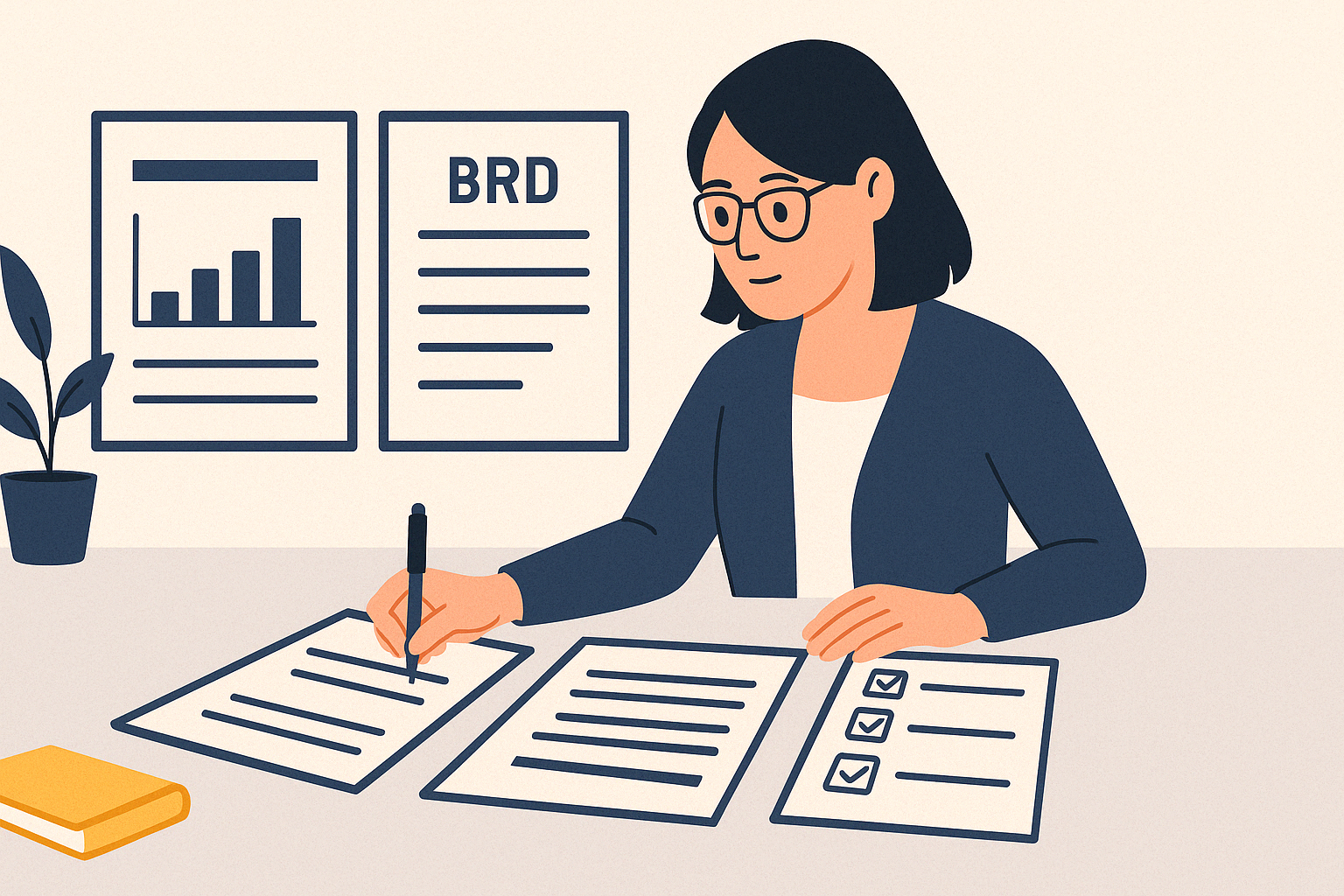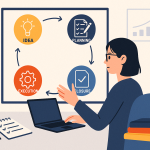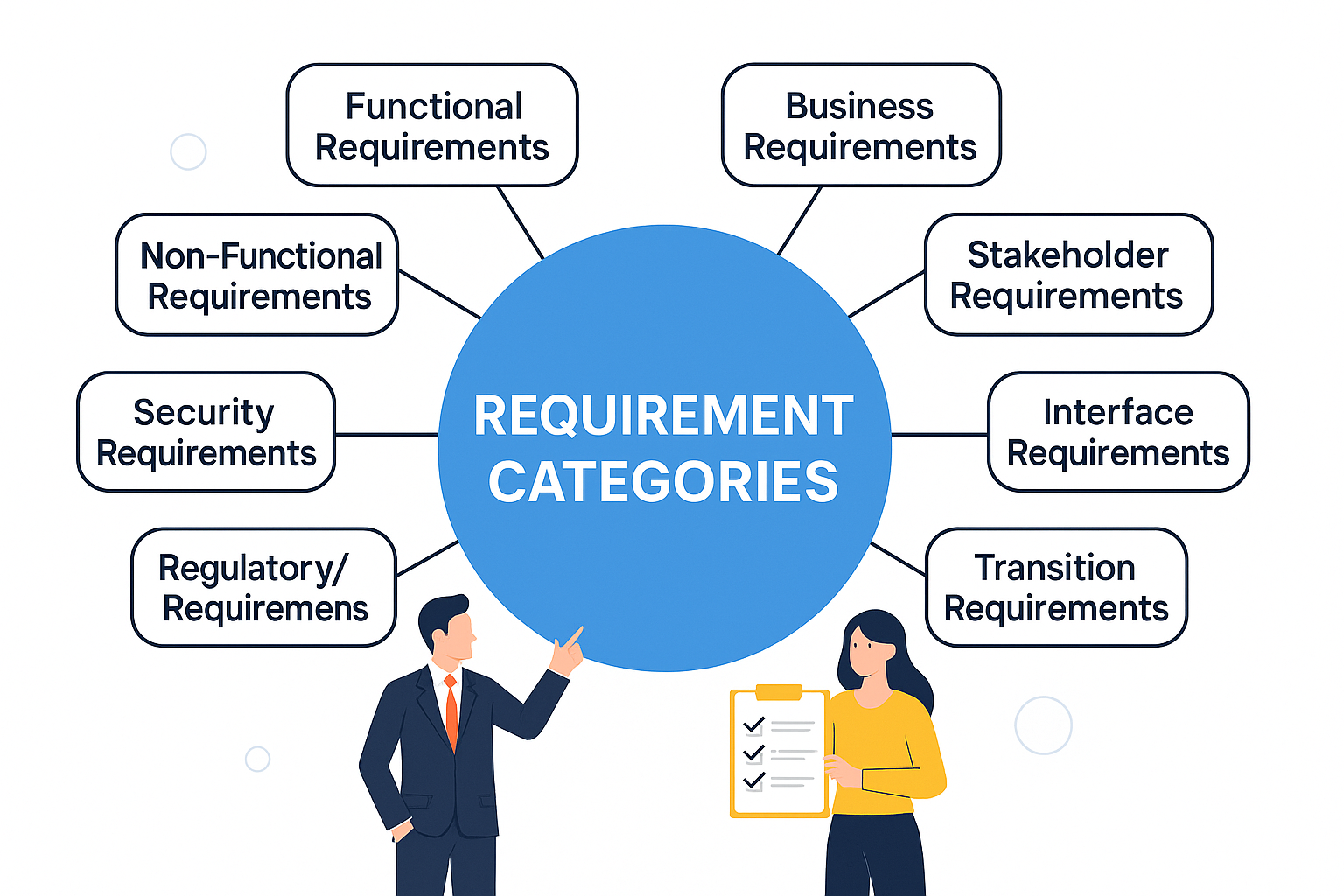
Here are downloadable-style templates for the three core business analysis documents. Each template is structured, easy to fill, and beginner-friendly — perfect for use in real or academic projects.
📄 1. Business Case Template
📌 Title: Business Case for [Project Name]
1. Executive Summary
- Brief overview of the business need, objective, solution, and expected benefits.
2. Business Need
- Describe the problem or opportunity driving this project.
3. Business Objective
- Define measurable goals (e.g., increase efficiency by 30%, reduce cost by $10k/year).
4. Solution Options
- Option A: Do nothing
- Option B: Buy new software
- Option C: Build custom solution
5. Recommended Option
- Explain the preferred solution and why.
6. Expected Benefits
- Tangible and intangible benefits (ROI, productivity, customer satisfaction).
7. Risks & Mitigation
- Key risks and how they will be managed.
8. Cost Estimate & Timeline
- Estimated budget and major milestones.
9. Approval Sign-Off
| Name | Role | Signature | Date |
|---|---|---|---|
📄 2. BRD – Business Requirements Document Template
📌 Title: BRD for [Project Name]
1. Introduction
- Purpose of the document
- Project overview
- Stakeholders involved
2. Business Objectives
- Clear list of business goals the project aims to achieve
3. Scope
- In-Scope
- Out-of-Scope
4. Functional Requirements
| ID | Requirement Description | Priority | Source |
|---|---|---|---|
| FR1 | System must allow users to log in securely | High | Stakeholder X |
5. Non-Functional Requirements
| ID | Description | Type | Priority |
|---|---|---|---|
| NFR1 | System must load within 3 sec | Performance | High |
6. Assumptions & Constraints
- E.g., User data is available in current CRM
7. Approval Sign-Off
| Name | Role | Signature | Date |
|---|---|---|---|
📋 3. Requirement Gathering Checklist
✅ Stakeholder Identification
- Have you identified all key stakeholders?
- Have roles & responsibilities been clarified?
✅ Preparation
- Have you reviewed existing documents?
- Have you planned elicitation techniques?
✅ Elicitation
- Conducted interviews/workshops/surveys
- Recorded meeting notes and observations
✅ Documentation
- Functional requirements documented (FRD or User Stories)
- Non-functional requirements captured
- Use cases or process flows created
✅ Validation
- Requirements reviewed with stakeholders
- Sign-off received from decision-makers
✅ Traceability
- Traceability Matrix created (linking requirements to goals/test cases)


